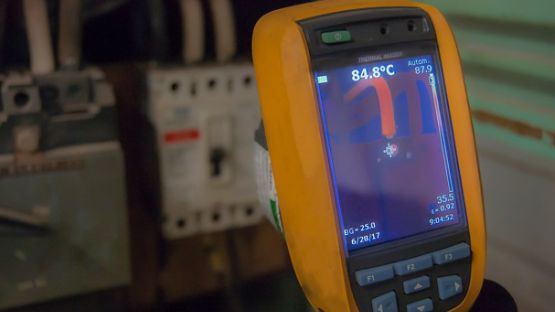Electric vehicles (EVs) are becoming increasingly common on the road. Statistics Canada reports that, in 2023, zero-emission vehicles accounted for just over 1 in 10 (10.8%) of all new motor vehicle registrations − almost 50% higher than 2022 and a 115% increase compared to 2021.
What does this mean for businesses that invest in EV fleets? According to Deloitte Canada, 2024 should be the year of the electric fleet vehicle, noting that, “Now is the time for fleets to start to transition to EVs or risk losing a competitive edge.” They cite increasing consumer demands for carbon-free transportation of goods and a 30-40% less operating cost of EVs as compelling reasons for businesses to make the switch.
Our Aviva Risk Management specialists have observed that most business fleets that have transitioned to EVs are municipal vehicles, such as buses and construction trucks. As more private businesses move to EVs in their fleets, there are some important risk mitigation factors for your business to consider.
Storing EVs at businesses
As your business prepares for EVs, it’s critical to build the right infrastructure to park and charge lithium-ion-powered electric vehicles.
While it may be customary and cost-effective to store large electric vehicles, such as buses and delivery trucks, with minimal spacing in a huge bay, this method poses a serious fire hazard for EVs powered by rechargeable batteries.
The Canadian Association of Fire Chiefs warn that lithium-ion batteries used to power EVs, as well as e-bikes, laptops, cell phones and other electronics are more easily damaged than other types of batteries and can explode or burst into flames when damaged or improperly used through a process called thermal runaway.
Ken McMullen, president of the organization, told CTV News that the resulting fires are “extremely aggressive and volatile in the sense that it happens very quickly.”
Protecting your fleet from fire hazards
In an EV bay that houses dozens or even hundreds of vehicles, the risk of fire is a huge concern.
Aviva Risk Management Solutions team recommends taking a few measures to mitigate the risk of fire in your business EV fleet:
- When possible, avoid storing all EVs under one roof. It’s best to spread them out with space separation in between groups of vehicles. Even outside, they should have some space separation between groups of electric vehicles. Group size should be determined by the space available, loss potential and the critical nature of the vehicles.
- Install a fire break wall, such as cinderblock or a metal wall, between vehicles to reduce the risk of fire spreading from EV to EV.
- Avoid storing multiple types of the same vehicle in the same charging bay − if there’s a fire, you don’t want to lose your entire fleet of front-end loaders or residential garbage trucks.
- Install battery chargers away from buildings, if possible.
- Check with your local hydro provider to confirm your area and facility can provide the power required for your EV fleet.
- Before you purchase an EV, ensure you have a facility that is capable, and certified for repairs on high-voltage components and batteries. If not, this could result in extreme downtime.
Preparing your charging infrastructure for a power outage
Business continuity plans will be different for EV fleets. Businesses must prepare for what would happen if the electrical grid went down for any period of time and vehicles could not be adequately charged.
A potential contingency plan could include having a backup generator and battery storage that would allow EV to charge.
Charging EVs
It's important to take care to avoid thermal runaway when charging EVs. Thermal runaway is the rapid increase of battery cell temperature and pressure that can cause a fire when accompanied by the release of a flammable gas.
Aviva Risk Management Solutions team recommends:
- Using a battery monitoring system that will shut down the EV charging when the battery is fully charged or if the temperature or pressure reaches a dangerous level
- Using a timer to ensure the EV is only charging for a set period of time
- Charging batteries during operational hours, when people are present to act in case of overheating
- Charging batteries outdoors, at least 10 metres from buildings and critical management infrastructure, if possible
Transitioning to electric vehicles is a strategic necessity for businesses aiming to stay competitive and meet business sustainability goals. This shift demands careful planning and risk management, especially in storing, charging and maintaining EVs.
By implementing fire safety measures, robust backup power solutions, and advanced battery monitoring systems, companies can mitigate risks and ensure operational efficiency of your EV fleet.
Aviva Risk Management Solutions team can help
If you have questions about transitioning to EVs in your business fleet, reach out to Aviva’s Commercial Fleet Specialists. We’re here to support your business.
Sources:
Electric Autonomy Canada: Is 2024 the year of the electric fleet vehicle? Deloitte says ‘’yes’’
CTV News: Lithium-ion battery fires on the rise across Canada, fire chiefs warn













